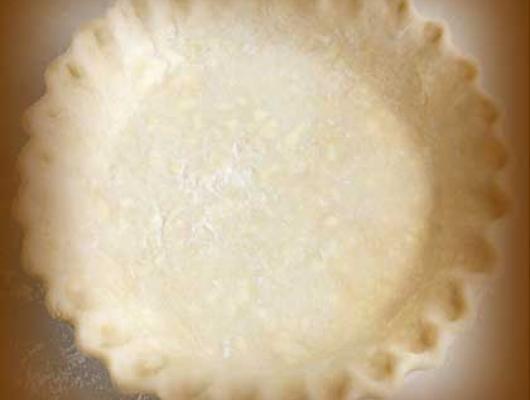Super flaky pie crust
Ingredients
Preparation
About
Though high-quality pie crusts are available in most grocery markets, there is something satisfying about baking your own. With a little patience and a little practice, you will soon be turning out pastry crusts that rival the best commercial versions and would make Great-Grandma proud!
A few key pointers that will help you succeed with pie crust:
Unsalted versus salted butter...the debate continues. UNsalted butter is typically preferred for pastry because of its lower water content. However, I find that salted butter works just fine if I reduce the actual salt called for in this recipe.
Butter should be extra-chilled. I chop up the butter into quarter-sized chunks and set it in the freezer for about fifteen minutes to cool it before using it in my pie crust. This ensures that small blobs of butter will remain through the mixing process so that when the crust is rolled out, those little butter blobs produce a tender, flaky finished texture.
Ice water means exactly that...ICE water. When I begin assembling a pie crust, I fill a small glass with ice cubes and fill it with water so that the water is truly ice cold when I add it to my flour/butter mixture.
"Pie weights" are helpful for pre-baked crusts. Commercial weights come in several forms, the most popular being thin chain, metal marbles, and ceramic marbles or discs. The raw pie crust is covered with foil or waxed paper, then the weights are placed inside to prevent the crust from shrinking during pre-baking. Being something of a "do-it-myselfer", I simply place a second pie pan directly on top of the raw crust and bake it that way. You can use almost anything to weight down your crust: loose change, dried beans, marbles, dry rice or grains, etc.
Ok, so let's get started!










